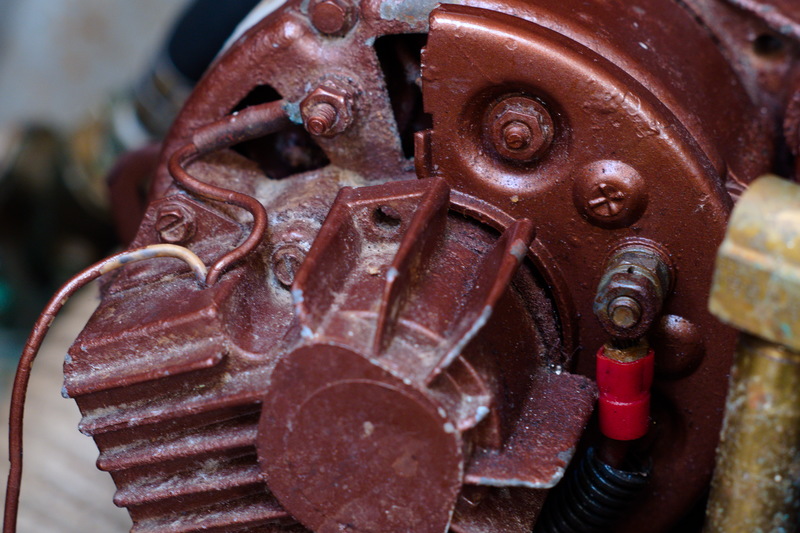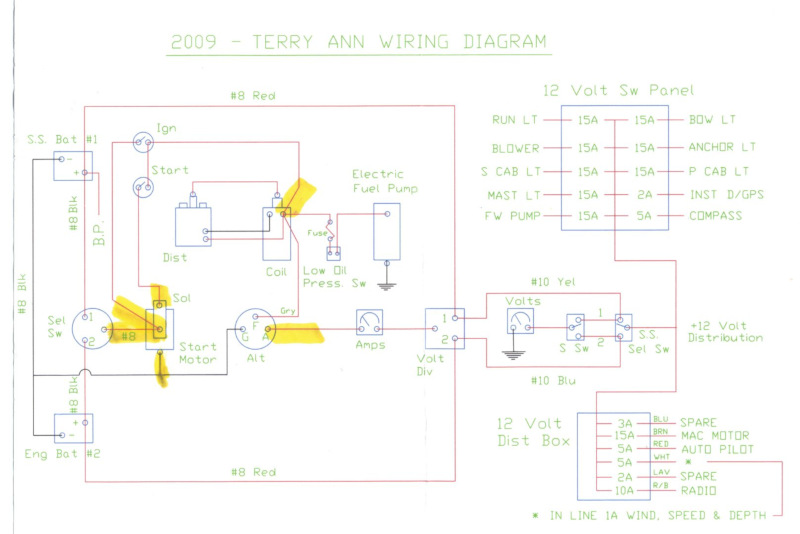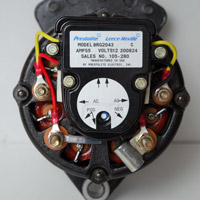Hi All - My battery is not getting charging voltage from the alternator. I removed the alternator and took it to a shop. The mechanic said that a diode in the regulator is blown and that he is unable to find the diode in his catalog. He said he might have more luck if he had some identification of the alternator. Can anyone identify this alternator, off a late model Moyer rebuild from 2009?

The boat had a starting battery and a house battery, but the house battery faulted and I removed it altogether.
The diode may have blown from being routed to the faulted battery before I removed it, but looking at the wiring diagram it appears to me that the alternator output goes to an isolator and then is routed to both batteries without going through the A-B switch. A friend with much more electrical ability than me checked the resistance through the isolator and said he thought it was defective. He suggested that I remove the isolator and tie the three red wires to the isolator together.

If I can get the alternator repaired I would like to. Or, buy a new one from the Moyer site, if it will drop in place of the old one. Or, beg, borrow or steal a small gas generator to keep the battery charged enough to get me to the Pamlico Sound where there are Atomic 4 mechanics who can fix my charging system. I have not been able to find anyone to do the work at my present location on the upper Albemarle Sound.
Any advice appreciated...

The boat had a starting battery and a house battery, but the house battery faulted and I removed it altogether.
The diode may have blown from being routed to the faulted battery before I removed it, but looking at the wiring diagram it appears to me that the alternator output goes to an isolator and then is routed to both batteries without going through the A-B switch. A friend with much more electrical ability than me checked the resistance through the isolator and said he thought it was defective. He suggested that I remove the isolator and tie the three red wires to the isolator together.

If I can get the alternator repaired I would like to. Or, buy a new one from the Moyer site, if it will drop in place of the old one. Or, beg, borrow or steal a small gas generator to keep the battery charged enough to get me to the Pamlico Sound where there are Atomic 4 mechanics who can fix my charging system. I have not been able to find anyone to do the work at my present location on the upper Albemarle Sound.
Any advice appreciated...




Comment